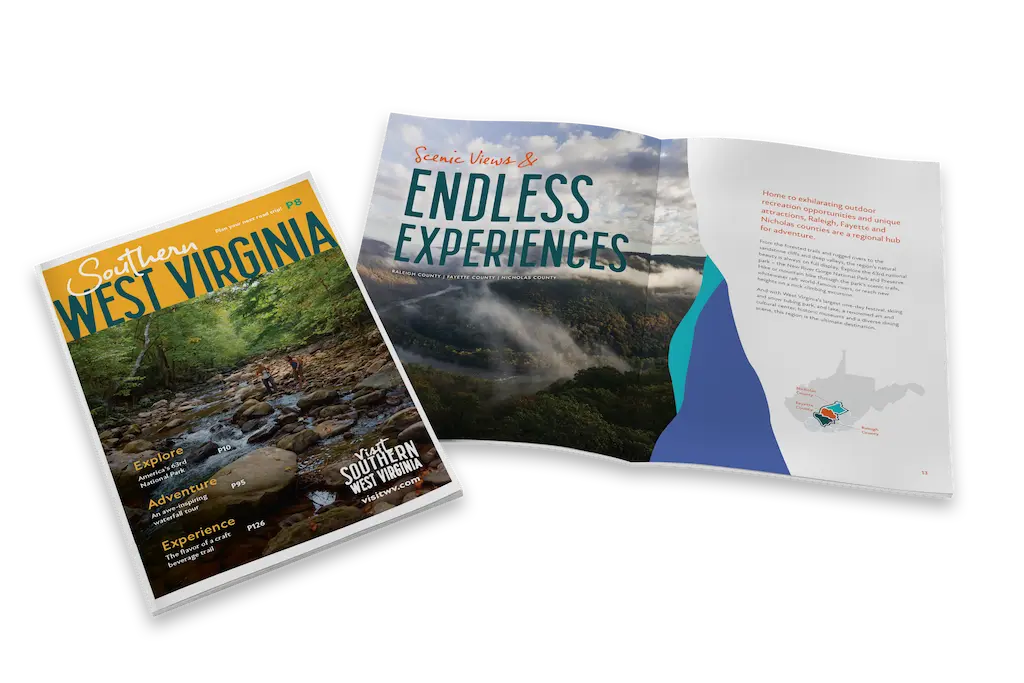Which type of camping suits your personality?
June 29, 2016One of the best ways to get the most out of a summer in the great outdoors is to go camping. You pitch your tent, cook dinner over a fire, fall asleep to the sound of cicadas and chirping frogs, and then wake up to hot coffee and a foggy sunrise— this is truly an all-encompassing nature experience.
The mountains and forests of West Virginia are perfect for camping through the spring, summer, and fall. No matter what type of camping you want to do— backpacking or in an RV, under the stars or in a luxury treehouse, miles from the nearest person or in a developed campground— the Mountain State delivers.
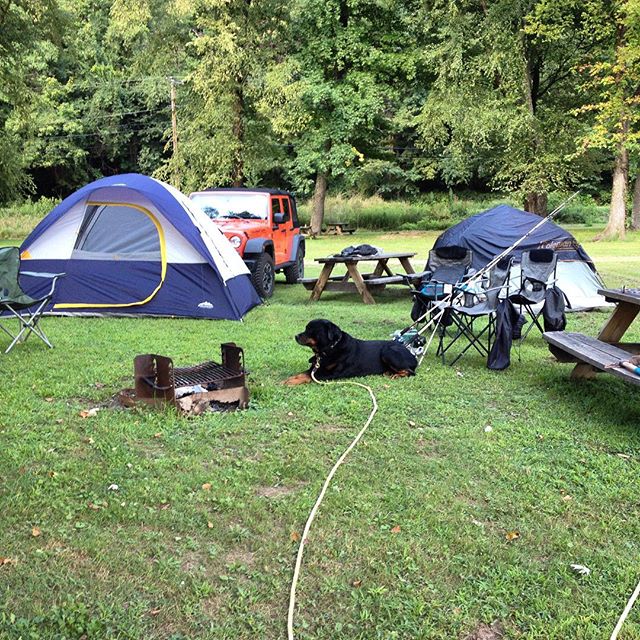 Types of camping
Types of camping
For the most part, camping is divided into 2 broad categories: car camping, and self-supported camping.
Car camping is any time you sleep outdoors, but within a short distance of your vehicle. The advantages are obvious: you can bring along just about any outdoors/picnicking gear that you want, you can charge electronic gadgets, and if that terrible rainstorm ever gets to be too much, well, you can tuck tail and drive home in the middle of the night.
Although it’s certainly possible to car camp way back on our country roads in the middle of nowhere, most folks prefer developed campgrounds. Campgrounds can be as simple as a rustic patch of woods with a picnic table and firepit, or as big and complex as resorts with restaurants, showers, electrical hookups and wifi.
RV camping
Once you get into the realm of various types of RV’s (Recreational Vehicles), car camping can get even more luxurious. RV’s are a pretty broad category— everything from camper shells on pickup trucks and modified vans, all the way up to huge motorhomes or trailers with full kitchens, living rooms and queen-sized beds.
The bigger your RV is, the more likely you’ll be limited to camping in a developed, less rustic campground. If you have a smaller RV or trailer, though, don’t hesitate to contact tent-only campgrounds to see if they can accommodate you. They might not have electrical or sewer hookups, but a lot of them have a more intimate, wooded atmosphere than large RV parks.
Self-supported camping
Self-supported camping is the way to get truly off the grid and into solitude. Once you get away from the roads, you’ll get away from 95% of your fellow campers. When most folks think of self-supported camping, they think backpacking— carrying minimal, lightweight gear on your back for multi-day wilderness trips.
Self-supported camping includes bikepacking and multi-day river running, too.
Bikepacking is just what the name implies: loading backpacking gear onto a bike, either in pannier bags or even in a small trailer.
River running might be the most luxurious type of self-supported camping. You take a kayak, canoe or raft down a river and camp on sandbars along its banks. You can be as off-the-grid and away from cars as you are when you backpack, but bring car-camping luxuries like coolers, folding tables and camp chairs (depending on your boat).
West Virginia has countless opportunities for ALL of these types of camping, and more.
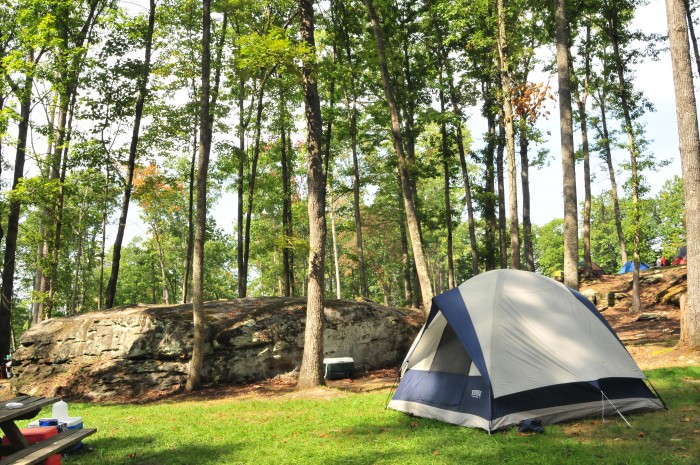 Gear: What to buy, what to bring?
Gear: What to buy, what to bring?
The sheer amount of gear for camping is daunting, and we won’t be able to cover the details of every titanium spork or pocket can-opener here.
Car camping gear
When you’re car camping, you can easily find general-purpose camping gear from a sporting goods or department store. Folding chairs, big standing-room tents, 2-burner propane stoves— that sort of thing.
As any Mountain Stater knows, West Virginia rains, a LOT. Whether it’s a cold and sleety spring storm or a warm, subtropical summer downpour, you’ll definitely want to be prepared for wet weather when camping. Even a 20% forecast of rain has been known to become a heavy thunderstorm here.
A standard hardware-store blue tarp hung over your campsite can make the difference between comfort and misery during a rainstorm, and if you are using a less-expensive tent, a tarp over the top of it can keep it much drier inside.
Heavy rain can saturate the ground, and create a mudpit under your tent. Consider keeping your bed off the ground with a cot.
Some developed campgrounds and even backcountry sites have elevated tent platforms— basically wooden decks that keep you off the ground. These are true luxuries in a heavy storm, but you’ll need to have extra cord to rig your tent on top of them, as well as some extra padding for their hard surfaces.
Self-supported camping gear
If you are planning mostly self-supported trips, you may want to visit a specific outdoors store like Water Stone Outdoors in Fayetteville, and spend a bit more money on lightweight, high-performance gear.
Self-inflating pads, internal-suspension backpacks and form-fitting “mummy” bags are all worthy investments for backpackers.
For rainy weather gear, self-supported campers know that “breathability” is just as important as waterproofing. Cheap rain ponchos or jackets are basically plastic, and in Appalachian humidity, your internal sweating will quickly make you as wet under your rain gear as you are on the outside. High-quality rain gear made of permeable barriers like Gore-tex allow your perspiration to escape while still keeping the elements out. If you’re hiking much, you may even want to invest in Gore-tex boots.
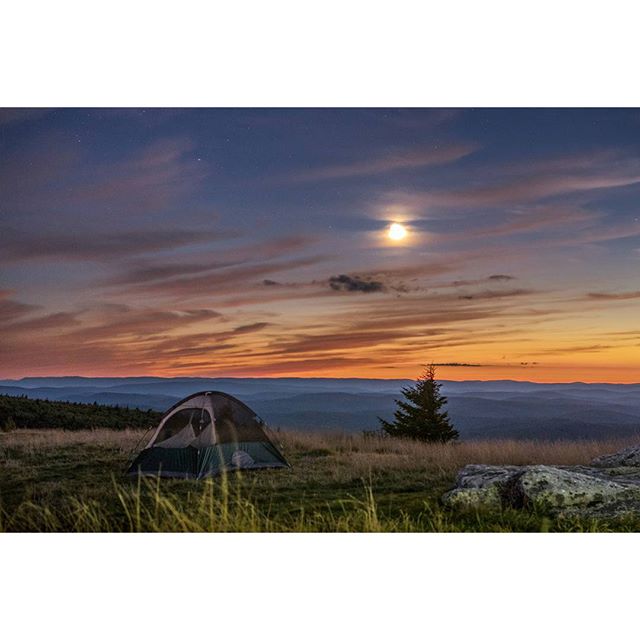 Where to camp in the Mountain State
Where to camp in the Mountain State
There are hundreds of amazing natural areas in Southern West Virginia– state parks, National Parks, state forests, national forests, reservoirs, lakes, scenic rivers— too many to name.
Some state parks like, Babcock State Park, have paved access roads, electrical hookups and dumping stations for RVs, and hot showers. It’s a great way to directly enjoy nature. There are even hiking trails that you can take directly from your campsite. These campgrounds tend to fill up very quickly, though. It is best to make reservations for them well ahead of time.
Other public lands have less developed car-camping sites that are usually much cheaper, and sometimes even free. They may not have full-time hosts, showers, electricity, pavement or even trash services, but most will have some sort of picnic table or firepit.
When you camp at some of these limited-service campgrounds, enjoy the isolation and lack of crowds, but be aware that you have more responsibility. Always leave campsites in better shape than you have found them.
Find some of Southern West Virginia’s best and least-developed car camping sites along remote stretches of the New River.
What about truly remote, self-supported camping? All you have to do is make the effort to get off the grid. Even the famous Appalachian Trail runs briefly through Monroe County.
Although backpacking trails go deep into the backcountry, you still may be able to find the occasional shelter, hut or platform. Check your trail maps and plan accordingly.
For bikepacking, check out the routes and campsites along the nearly 100-mile Greenbrier River Trail. For river trips, you can try multi-day riverside camping along the New or Greenbrier Rivers. Just make sure that your boating skills are up to par for the river you are floating!
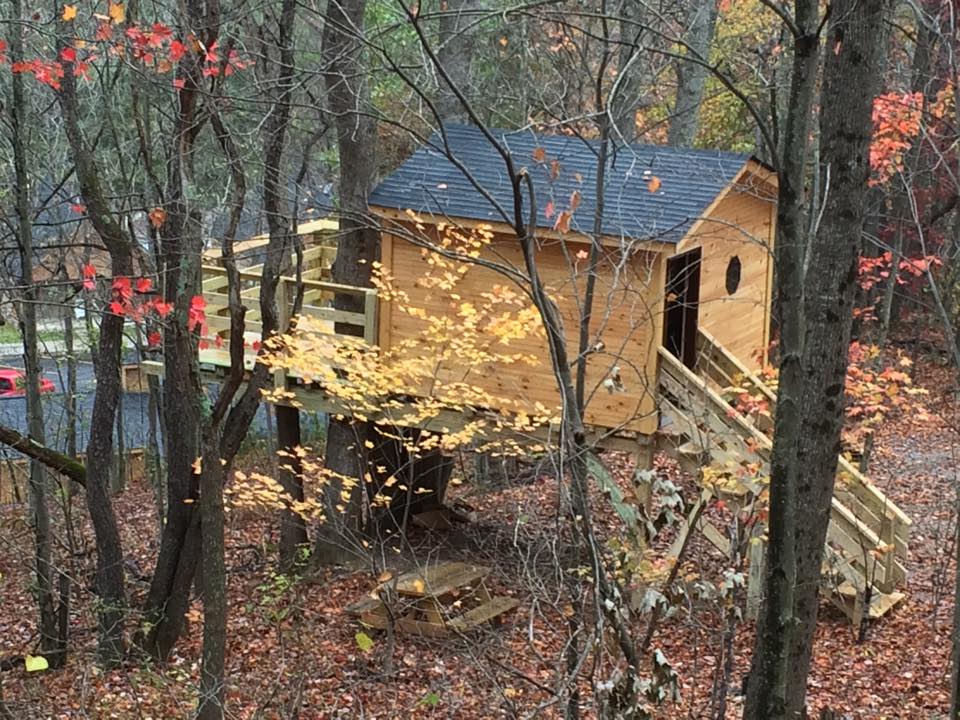 Glamping: Blurring the lines between inside & outside
Glamping: Blurring the lines between inside & outside
Sometimes, the best camping might not even be “camping,” per se.
The latest craze is “glamping”— glamorous, luxurious camping. Instead of a damp nylon tent, you may have a fine canvas one. Instead of a sleeping pad and bag, you may be in a woven hammock, or even a bed. Instead of an open campfire, there might be a wood stove in your tent. Canned beans? How about a gourmet salmon or beef steak cooked perfectly on a grill, with a side of roasted dutch oven potatoes and dessert
You can find a lot of glamping here in Southern WV. Country Road Cabins near the New River Gorge has a yurt, and even a luxury treehouse. Buffalo Trail Cabins has quaint accommodations for every level of luxury from rustic to high-end, with a restaurant and activities right on-site. You can even glamp after a day of getting wild on an ATV/dirtbike getaway at Burning Rock Adventure Park, which has deluxe platform tents with modern bathroom and kitchen amenities.
Beyond all these exotic glamping experiences, most private resorts and state parks also have rustic cabins. You can get a good night’s sleep in a bed, then step out to enjoy your morning coffee in the great outdoors.
Pack your bags, charge up your camera, and don’t forget your rain gear!
by Paul Nelson

